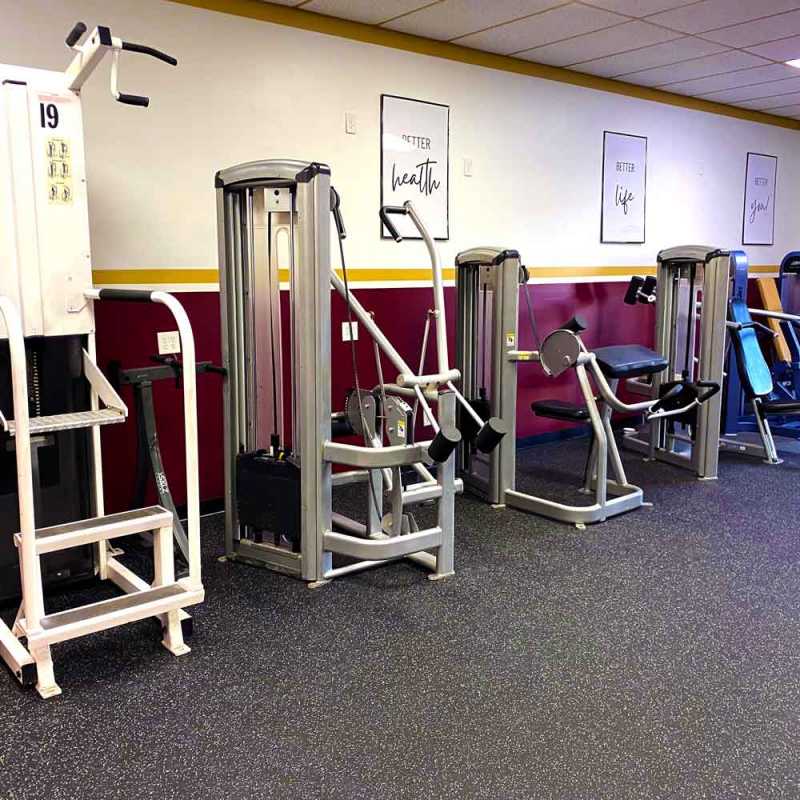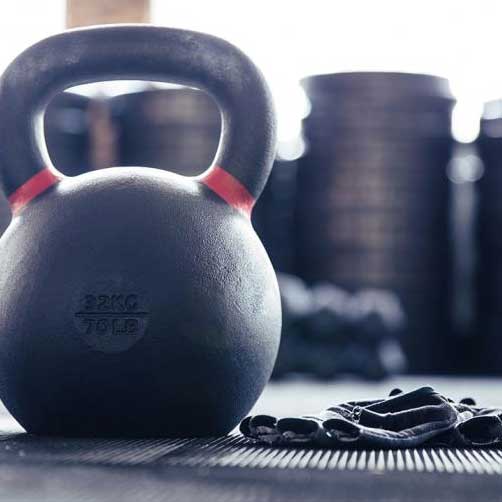Strength Building
...and how to measure it
Strength building comes from overloading muscles with heavier resistances than they are used to. Strength training exercises depend upon your training goals.




Strength Building and How to Measure It
Strength building comes from overloading muscles with heavier resistances than they are used to. Strength training exercises depend upon your training goals.
The first step toward developing strength is answering the question, "for what?". The purpose for increasing strength determines the specific muscles and types of contractions (isometric, isotonic) involved.
When lifting weights (isotonically), it is generally accepted that using 3-9 repetitions for at least one set once per week will produce gains early in training in the muscles that you exercise. More intensive training regimens are executed at 60-100% of 1RM, using 1-8 sets, of 1-8 repetitions per set, 1-3 times per week
Isometric strength is developed when force is applied but the muscle does not change length. For example, core muscles contract isometrically to stabilize the trunk during push ups.
In human movement, increases in the ability to exert force in any muscle or muscle groups must be coordinated with other muscles used in targeted skills.
For examples of whole body coordinations, see Olympic Lifting
How to Measure Strength Gains
How do you know that your strength building progrm is working? The measures you use depend upon how you define it, your goals, and the movements involved.
It is referred to as absolute when measured by how much weight you can lift one time in a given exercise (e.g., squat, bench press at arm exercises) or how much force you can exert (e.g., hand dynamometer). Relative strength is measured by comparing your body weight to how much weight you can lift (expressed as a ratio). Both of these are ways to show gains in strength.
Fitness tests may include a variety different items to measure a combination of strength and other fitness components. To see that you are getting stronger in the ways that you intend, you can test your maximum weight loads (perform 1 RM or even 10 RM), perform standard fitness tests or specific test items, or devise your own measures that based on your own definitions and goals.
Two useful links that offer guidelines about strength building using maximum repetitions:
NSCA Poundage Chart Instructions from the NSCA site:
If your program calls for three sets of 10 repetitions go to the Fly Solo Program Poundage chart and locate your 1RM in the first column then use the three "Red" columns for 10 repetitions with 195 lbs, 210 lbs and 225 lbs. If your program calls for 3 sets of 5 repetitions and your 1RM is 300 lbs your sets would come from the "Blue" columns for 5 repetitions with 225 lbs, 240 lbs and 255 lbs.
Sources:
- McArdle, W.D., Katch, F.I., & Katch, V.L. (2000). Essentials of exercise physiology (2nd ed.). Baltimore: Lippincott, Williams, & Wilkins.
- Newton, H. (2002). Explosive lifting for sports. Champaign, IL: Human Kinetics.
- Powers, S.K., Dodd, S.L., & Noland, V.J. (2006). Total fitness and wellness (4th ed.). San Francisco: Pearson Education.
- Safrit, M.J. & Wood, T.M. (1996). Introduction to measurement in physical education and exercise science (3rd ed.). St. Louis, MO: Mosby.
- United States Department of Health and Human Services, President's Council on Physical Fitness and Sports. (2000, March). Definitions: Health, fitness, and physical activity.



